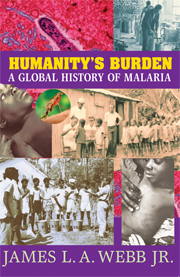3 - Into the Americas
Published online by Cambridge University Press: 05 March 2015
Summary
For many millennia after the great extension of malaria from tropical Africa into Eurasia, biological limitations kept the malaria genies bottled up. Early Eurasian voyagers had set out on oceanic missions to explore and colonize the far-flung Pacific islands to the east, and some of these sailors must have carried malaria parasites in their bloodstreams. Throughout the Pacific islands, however, there were no indigenous anopheline mosquitoes and thus no prospect for transmitting malaria. No mosquitoes could have survived the windswept ocean crossing in an open canoe. The malarial infections that the ocean-going migrants carried with them were eventually suppressed by their immune systems. The communities founded in the Pacific islands by the ocean migrants lived free from malaria.
There were also biological constraints on malaria farther to the north. There, the winter temperatures militated against year-round infection. Depending on the species, a few of the fertilized female mosquitoes that harbored malaria parasites might succeed in hibernating indoors, or all the adults died out at the onset of cold weather, and the population overwintered as larvae. In this second case, the new season of infection depended on a relapse of malaria in a sufferer or the arrival of infected migrants who hosted the parasites. For these reasons, the ongoing transmission of malaria within northern Eurasia was fraught with difficulties.
Some of these same northern biological constraints prevented the overland transfer of malaria and other diseases from northern Eurasia to the Americas.
- Type
- Chapter
- Information
- Humanity's BurdenA Global History of Malaria, pp. 66 - 91Publisher: Cambridge University PressPrint publication year: 2008



